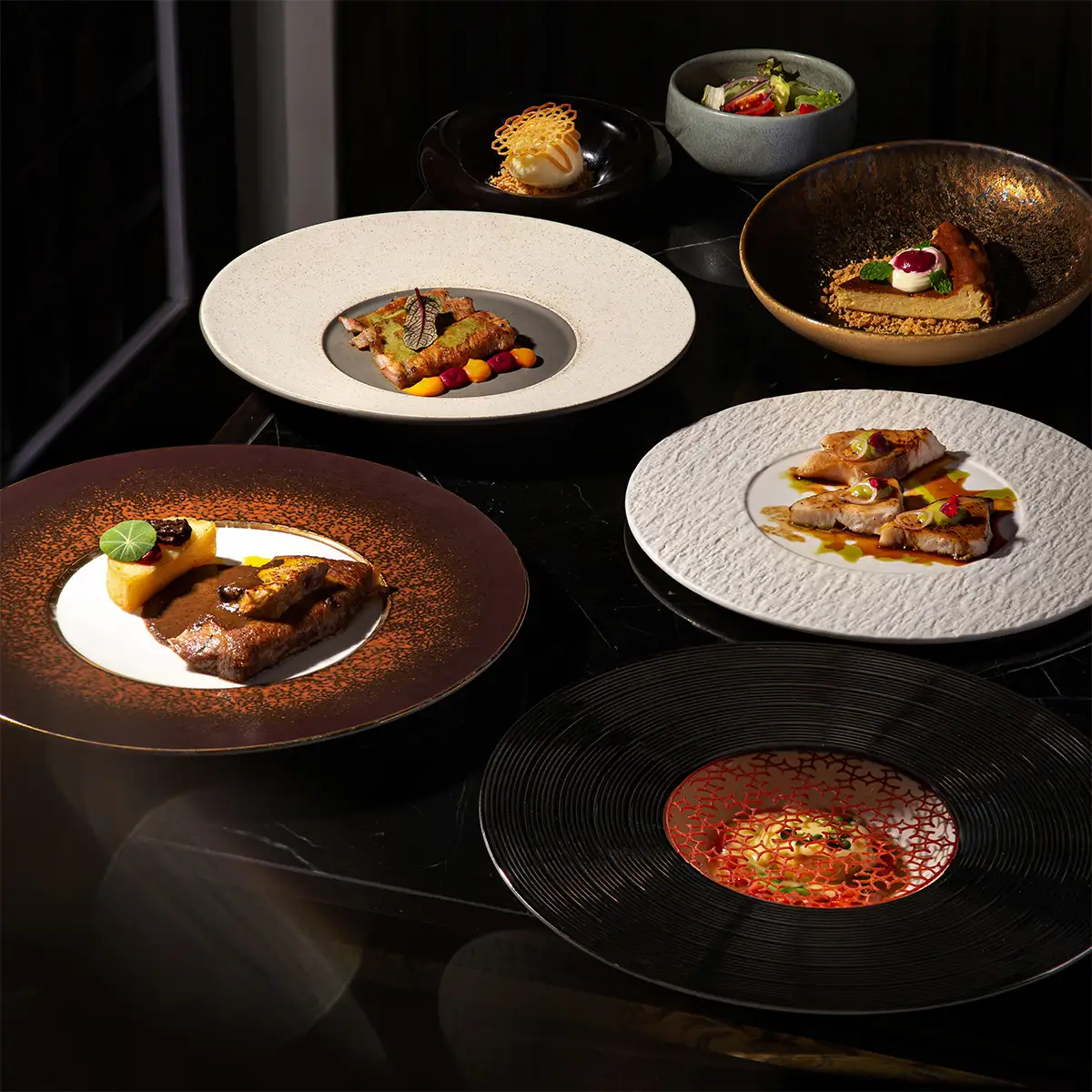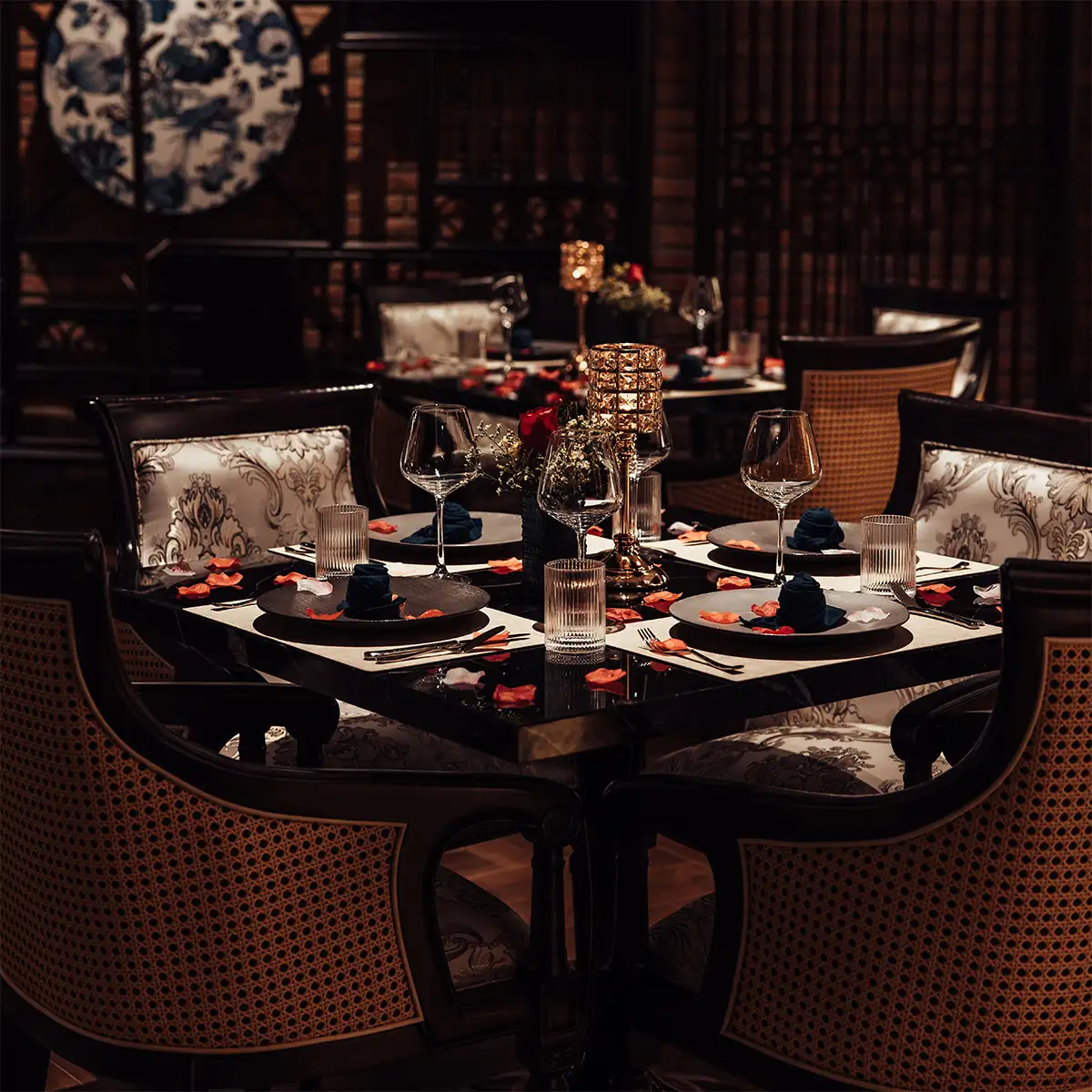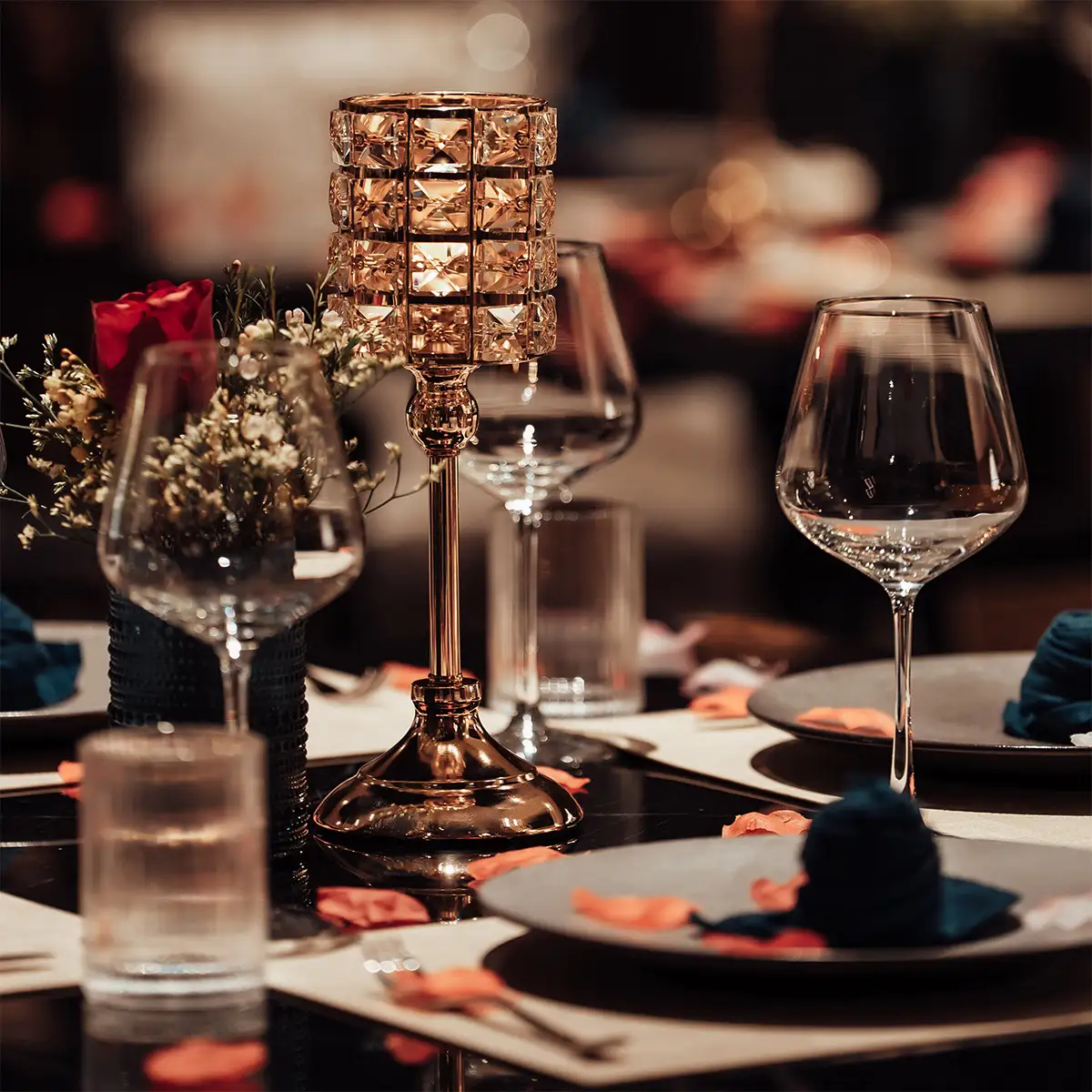- 1. Fundamental principles of fine dining plating
- 1.1. Balance and harmony
- 1.2. Focal point and flow
- 1.3. Negative space and plate choice
- 2. Key elements and techniques in fine dining plating
- 2.1. Strategic component placement
- 2.2. Mastering sauces and purees
- 2.3. Texture and height
- 2.4. Color and contrast
- 3. Practical considerations and advanced plating strategies
- 3.1. Tools of the trade
- 3.2. Consistency in a high-volume environment
- 3.3. Innovation and evolution in plating
The first bite is with the eye. In the world of fine dining, this statement is not a mere cliché; it is a foundational principle. Before a guest ever lifts their fork, they have already begun to taste the dish through its visual composition. This initial perception sets the stage for the entire sensory experience. Beyond taste, the meticulous art of how to plate fine dining dishes transforms a meal into a culinary masterpiece, communicating skill, intention, and artistry. This article will serve as a definitive guide, exploring the core principles, essential techniques, and profound impact of expert plating in a fine dining context, offering both foundational knowledge and fine dining plating inspiration.
1. Fundamental principles of fine dining plating
The creation of a visually stunning plate is governed by principles that are as crucial as the culinary techniques themselves. It is a deliberate process of constructing a composition that is both beautiful and functional.
1.1. Balance and harmony
A well-plated dish feels intentional and cohesive. This is achieved through a careful consideration of balance.
- Visual weight distribution: Components must be arranged to ensure the plate does not feel lopsided. Elements should not be clustered in one area, creating a sense of visual clutter, nor should they be so sparse as to feel incomplete. The goal is a harmonious distribution that feels natural and inviting.
- Proportionality: The relationship between the size of the food components and the plate itself is critical. A vast plate with a minuscule portion can feel pretentious, while an over-crowded plate appears chaotic. The portion size must be in elegant proportion to its canvas.
- Rule of odds: A classic design principle, the rule of odds suggests that using an odd number of elements—three or five, for example—creates a more dynamic and visually engaging composition than an even number. An arrangement of three scallops, for instance, is often more appealing than four.
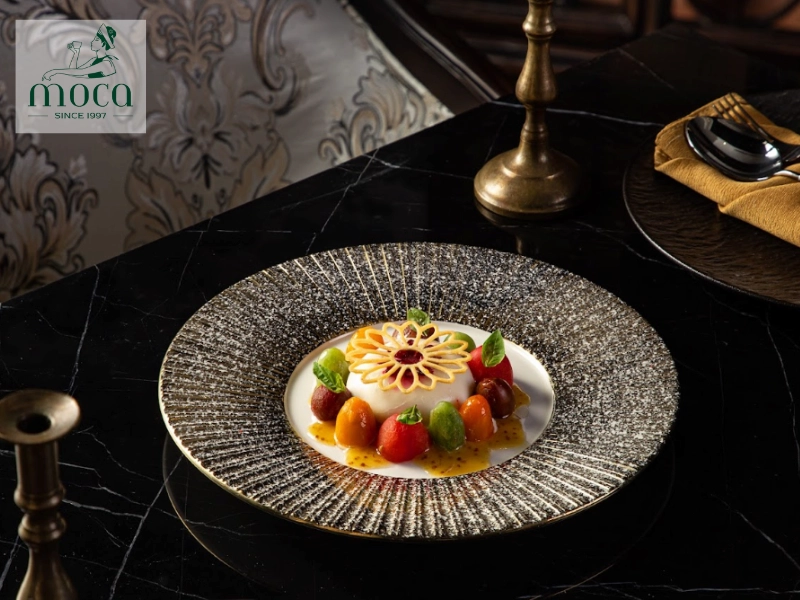
An odd-numbered arrangement creates visual rhythm and movement.
Learn more:Refine Your Taste with Fine Dining Workshops on Etiquette and Appreciation
1.2. Focal point and flow
Every great composition tells a story, guiding the observer's eye.
- Creating a center of attention: The most important element of the dish, typically the protein, should serve as the focal point. This does not mean it must be in the dead center, but its placement, size, and relationship to other components should immediately draw the diner's attention.
- Leading the eye: The arrangement of sauces, garnishes, and supporting ingredients should create a sense of movement. A swoosh of purée, a trail of herb oil, or the deliberate angle of vegetables can lead the eye across the plate, creating a visual narrative from one component to the next.
1.3. Negative space and plate choice
What is not on the plate is as important as what is.
- The importance of empty space: Negative space allows the key elements to breathe. It prevents a cluttered appearance and imparts a sense of elegance and focus. A clean, uncluttered rim is non-negotiable, framing the dish like a piece of art.
- Selecting the right canvas: The plate is the foundation of the fine dining dish presentation. Its shape, size, and color profoundly influence the final perception. While classic round, white plates remain a staple for their ability to make food colors pop, modern plating often utilizes a variety of canvases.
- Psychological impact of plateware: Scientific research has demonstrated the powerful effect of plateware on perception. Studies, including work from Oxford University, have shown that desserts served on white, round plates are often perceived as sweeter and more intensely flavored. Conversely, dark, angular plates can enhance the perception of savory, umami-rich notes. This psychological interplay is a tool that seasoned chefs use to subtly influence the dining experience before the first bite is even taken.
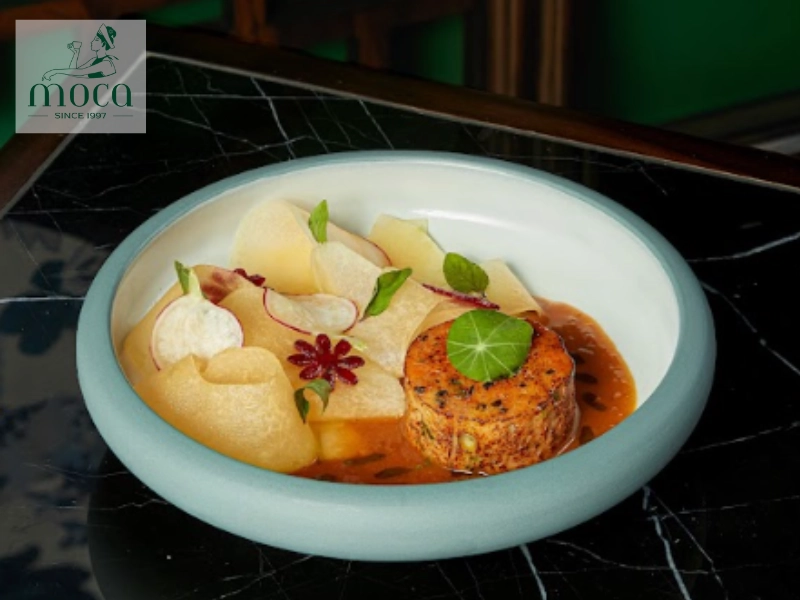
A dish presented with a clear focal point, using negative space and flow to guide the visual journey.
2. Key elements and techniques in fine dining plating
Mastery of plating comes from understanding how to handle each component with precision and purpose. Every element must contribute to the final composition in flavor, texture, and appearance.
2.1. Strategic component placement
- Main protein: As the focal point, the protein is often positioned slightly off-center to create a more dynamic layout. Slicing meat on a bias not only makes it more tender but also elegantly showcases its quality and cooking temperature.
- Starches and vegetables: These complementary elements should be arranged to add color, texture, and height without overshadowing the main component. They are the supporting cast that completes the scene.
- Garnishes: Garnishes must be purposeful. An edible flower, a microgreen, or a tuile should add a relevant flavor or textural contrast. They are not mere decoration; they are an integral part of the dish's story and a key source of fine dining plating inspiration.
2.2. Mastering sauces and purees
Sauces are a powerful tool for adding color, flavor, and visual flow.
-
Application techniques: The application of a sauce is a signature of a chef's style. Common techniques include the "swoosh" or "smear," dots, and controlled pools.
- Example 1: The Swoosh: A dollop of thick purée is placed on the plate. Then, using the back of a spoon, it is elegantly dragged across the plate to create a smooth, tapered streak of color and flavor.
- Example 2: Precision Dots: Using a squeeze bottle, a chef can place perfectly uniform dots of one or more sauces in a deliberate pattern, creating a modern, artistic effect. The sizes can be varied for contrast.
- Example 3: The Controlled Pour: A sauce can be poured to create a "pool" in which the main protein or other element is set. This technique works especially well for broths or thinner sauces, creating a moat of flavor around the focal point.
- Consistency and color: Sauces must have the correct consistency to hold their shape and a vibrant color that enhances the dish's visual appeal. A dull, broken sauce can ruin an otherwise perfect presentation.
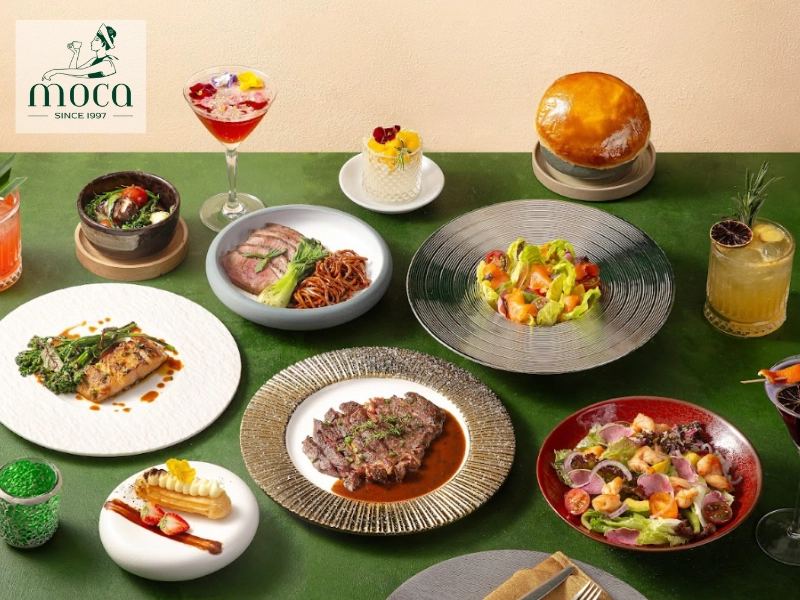
An artful fine dining presentation with precise placement, sauce work, and purposeful use of color, texture, and garnish.
Learn more: Fine Dining Restaurant Staff Training: Elevating Service Excellence for an Unforgettable Guest Experience
2.3. Texture and height
A dish should be as interesting to the palate as it is to the eye.
- Contrasting textures: A successful dish incorporates a variety of textures: creamy, crunchy, soft, and crisp. This textural interplay keeps the diner engaged with every bite.
- Building height: Stacking or layering components adds dimension and visual drama to the plate. Creating height gives the dish a three-dimensional, sculptural quality that flat plating lacks.
2.4. Color and contrast
Color is one of the most immediate and impactful visual cues.
- Natural palettes: The most effective plating utilizes the inherent, beautiful colors of the ingredients themselves—the deep green of asparagus, the rich orange of a carrot purée, or the vibrant red of a beet.
- Strategic color pops: A primarily neutral-toned dish can be brought to life with a strategic pop of color from a bright herb, an edible flower, or a vibrant sauce, drawing the eye and stimulating the appetite.

A refined dish with artful plating, vibrant colors, and rich textures to delight the eye and palate.
3. Practical considerations and advanced plating strategies
Artistry must meet reality in a professional kitchen. The ability to execute beautiful plating consistently and efficiently is the mark of a true professional.
3.1. Tools of the trade
Precision requires the right equipment. Essential tools for a chef focused on fine dining dish presentation include:
- Squeeze bottles and spoons: For precise application of sauces, oils, and purées.
- Tweezers and offset spatulas: For the delicate and exact placement of small, fragile components like herbs and garnishes.
- Molds and rings: For creating perfectly uniform shapes and clean lines with starches or other components.
3.2. Consistency in a high-volume environment
- Standard operating procedures (SOPs): Every dish on the menu should have a clear, documented plating guide, often including a photograph or diagram. This ensures that every plate that leaves the kitchen meets the same high standard, regardless of who is on the line.
- Chef training and practice: Plating is a physical skill that requires practice. Kitchen staff must be trained and drilled to ensure they are proficient and consistent in their execution.
- Quality control: The final check at the pass is crucial. Before a dish reaches the guest, it must be inspected for precision, cleanliness, and adherence to the established standard.
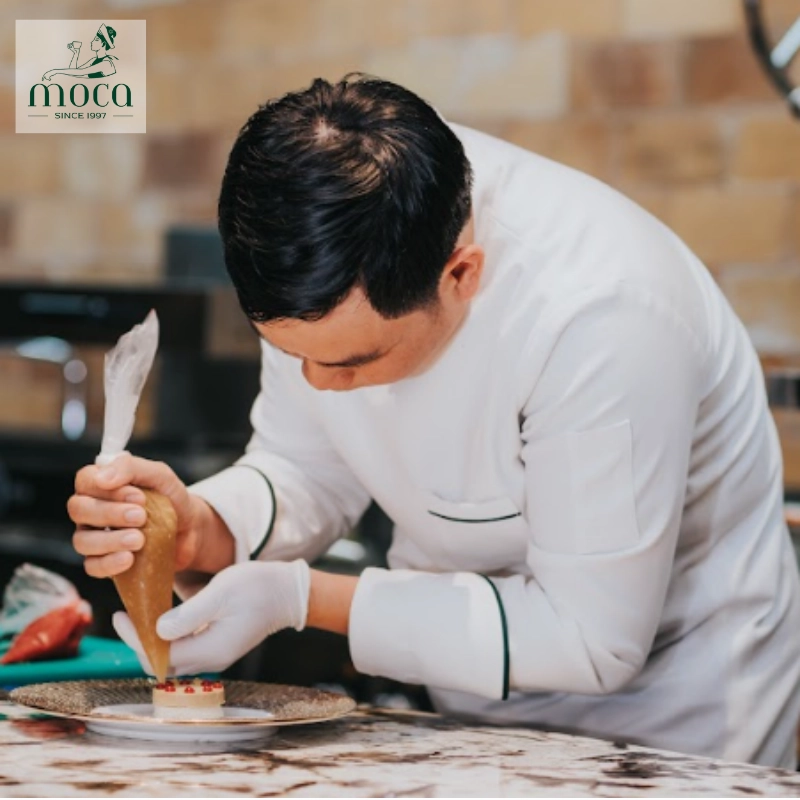
Artistry meets precision with pro tools, plating guides, and chef focus for consistent fine dining under pressure.
3.3. Innovation and evolution in plating
Plating is not a static art form; it evolves with culinary trends and concepts.
- Staying current with trends: A great chef is aware of contemporary plating styles, from minimalist and naturalistic arrangements to more abstract and deconstructed presentations.
- Storytelling through plating: The plate can be a canvas to convey a narrative about the dish's origin, the seasonality of its ingredients, or a specific culinary concept.
- Case study: Alinea, Chicago: For unparalleled fine dining plating inspiration, one must look to restaurants like Alinea. Under Chef Grant Achatz, Alinea has famously deconstructed the very concept of a plate. Their most iconic presentation involves creating a dessert directly on the table itself. Chefs arrive tableside with sauces, powders, and frozen elements, composing an abstract, edible painting in a moment of culinary theater. This approach does more than present food; it creates an unforgettable, interactive experience that is central to the restaurant's identity, proving that the method of how to plate fine dining dishes can be as important as the food itself.
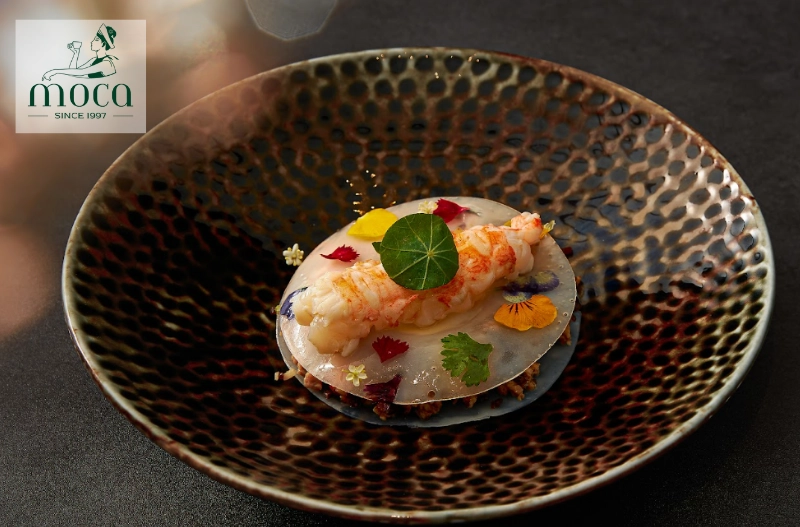
Plating beyond the plate — a story-driven, innovative experience redefining fine dining presentation.
In conclusion, plating is essential to the fine dining experience—bridging kitchen craft and guest perception. It’s a silent language of care, creativity, and excellence. Knowing how to plate fine dining dishes transforms food into art, turning a meal into a memorable event. Mastery of plating is a continuous journey of creativity, precision, and understanding the diner's experience. Elevate your culinary artistry and impress your guests with dishes that are as visually stunning as they are delicious. Make a reservation or connect with Moca Dining to access the tools and expertise that will refine your plating techniques.







